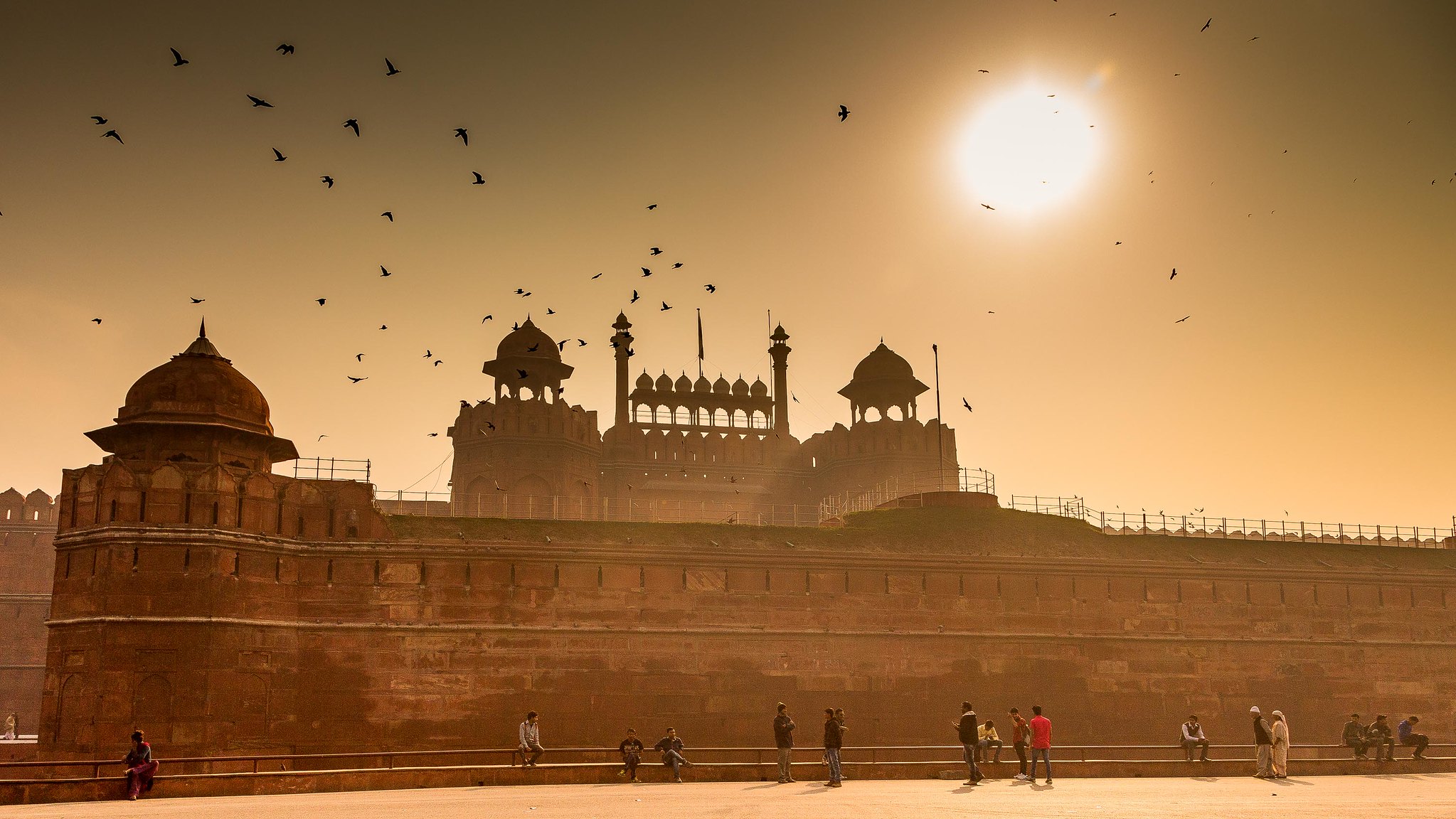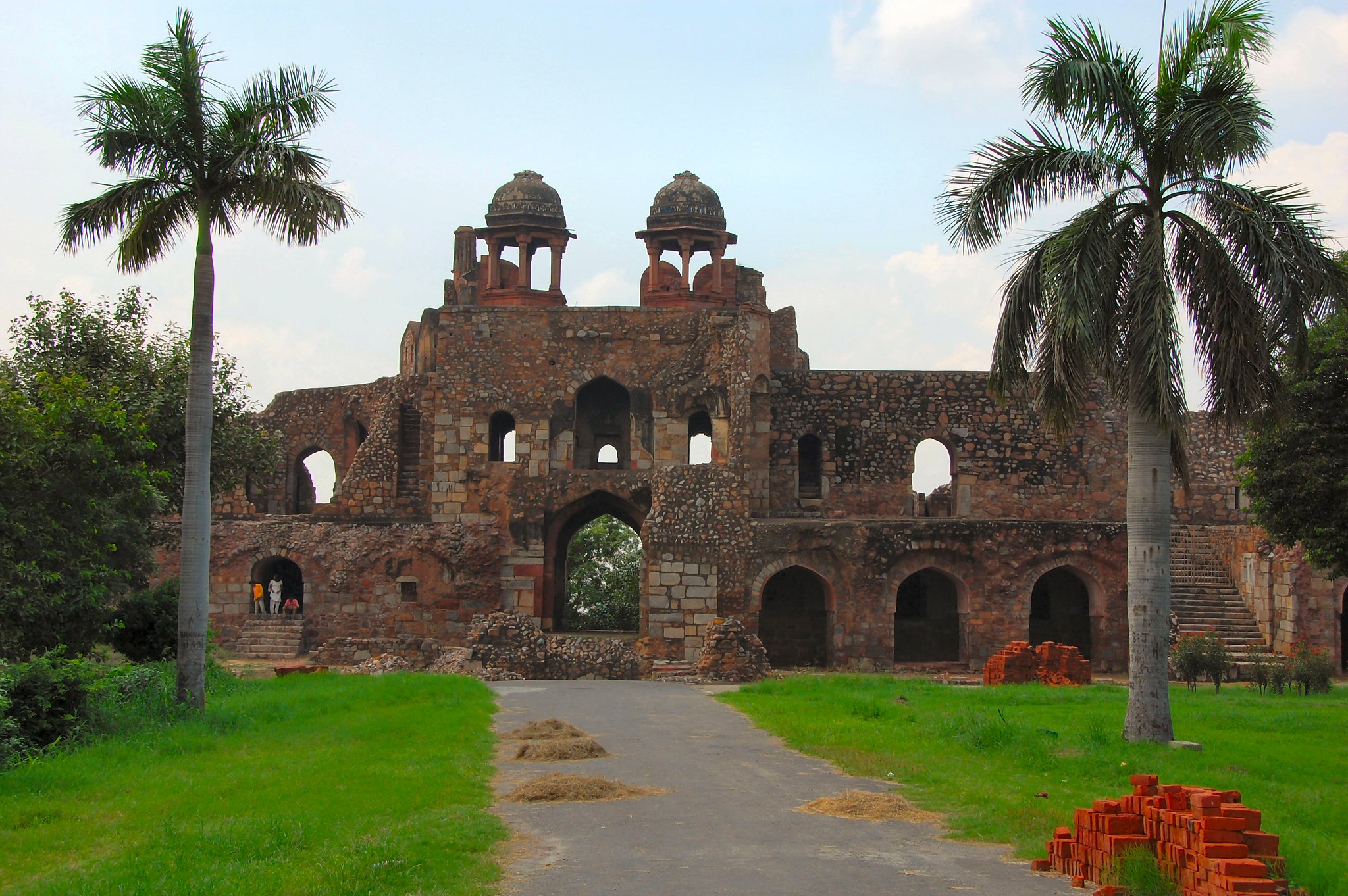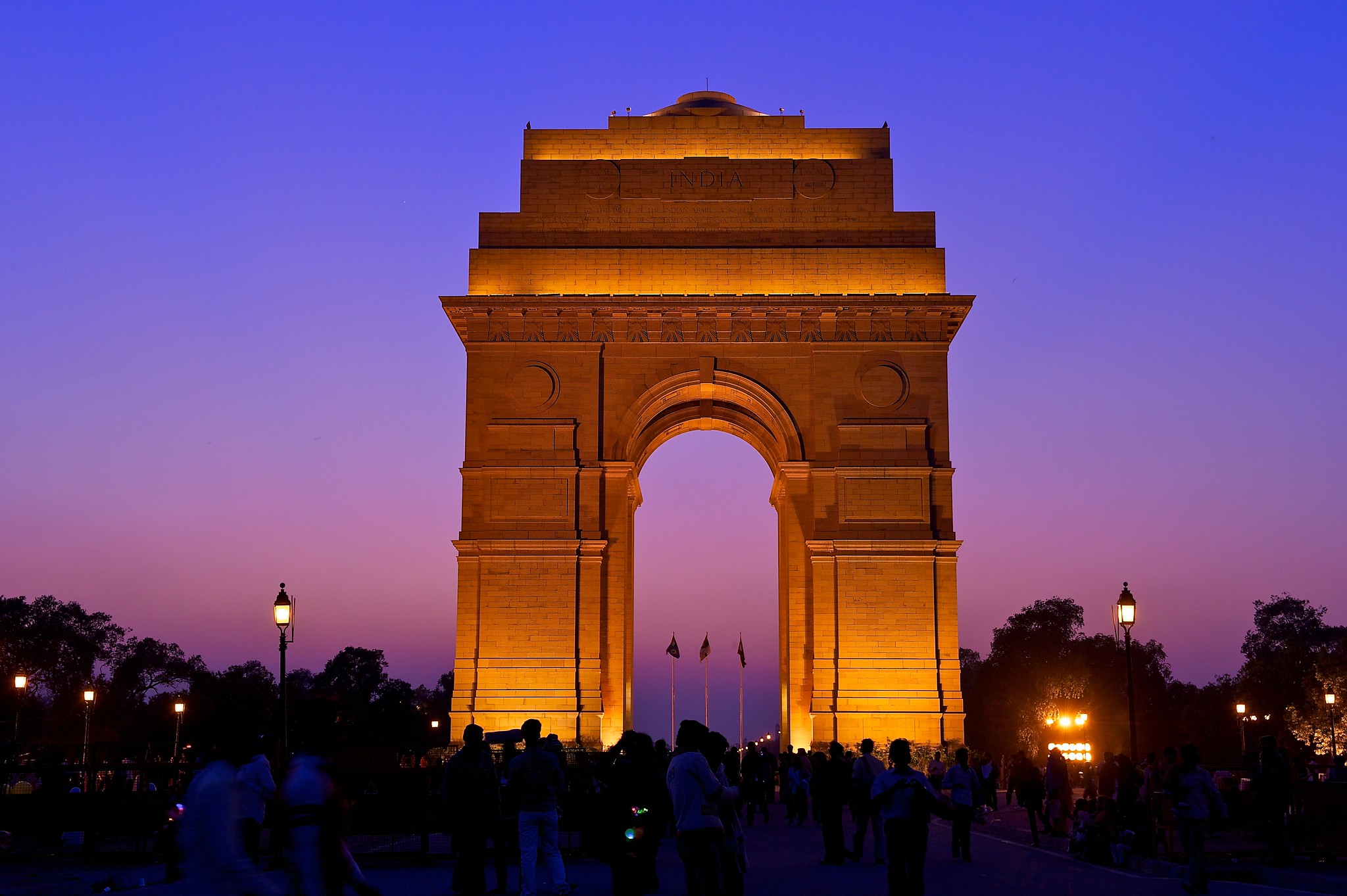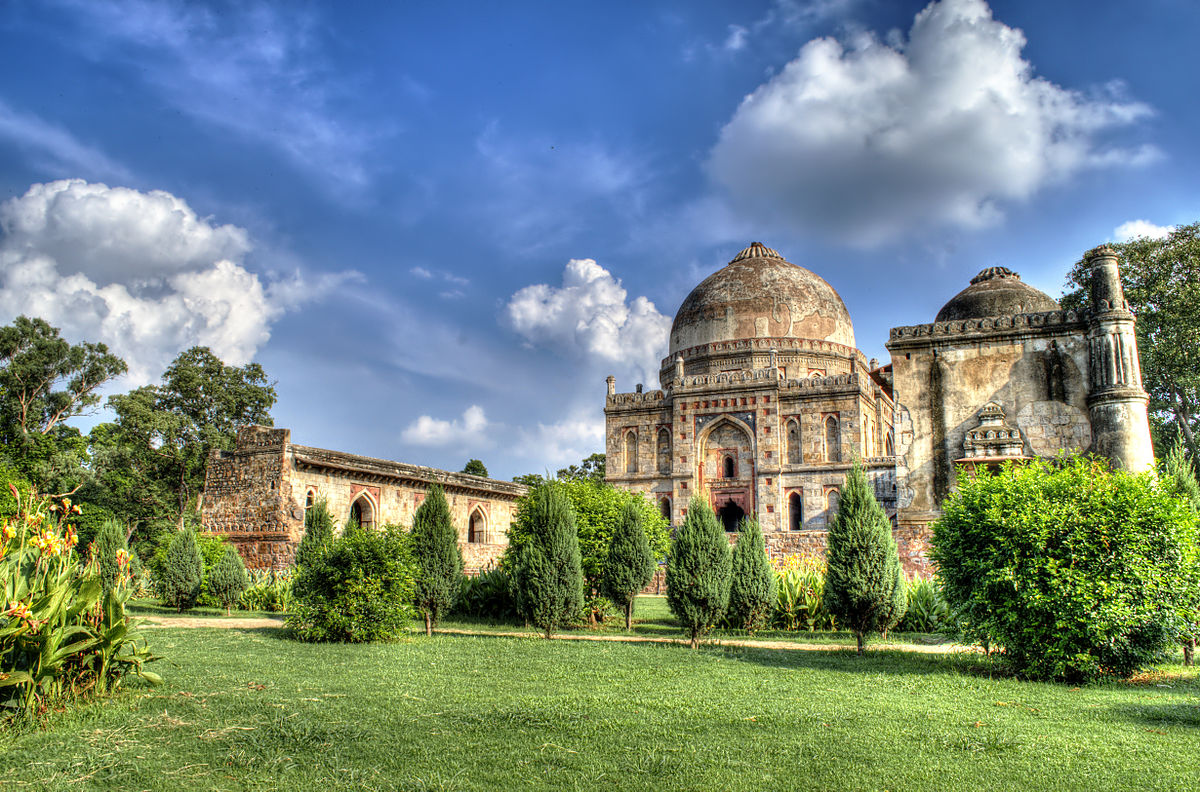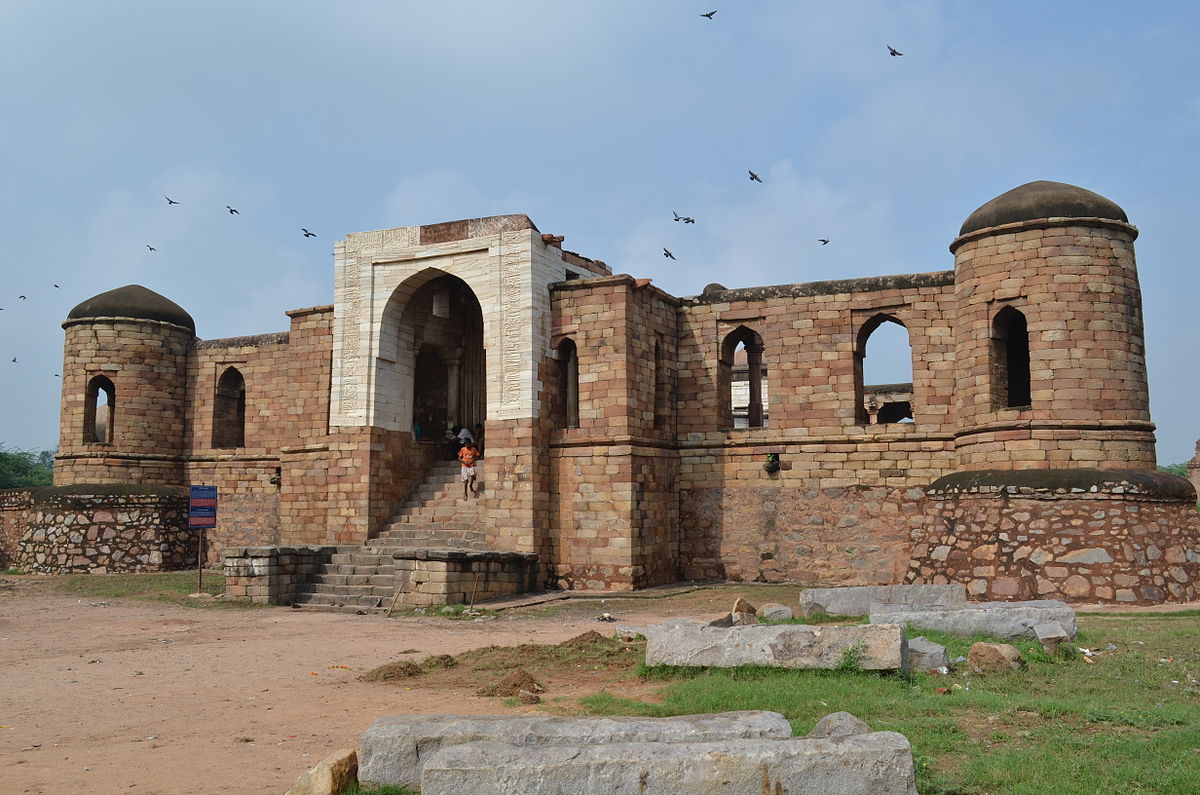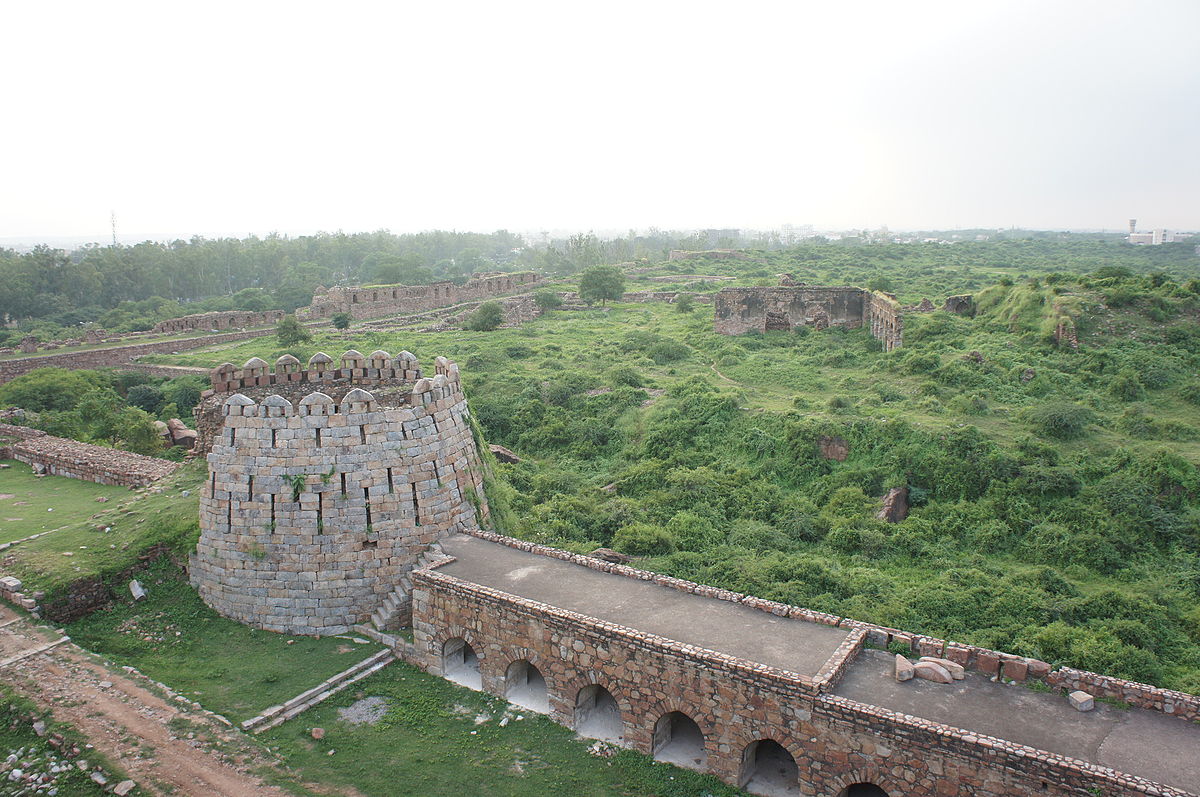11 Monuments In Delhi You Should Definitely Visit
“I asked my soul, what is Delhi? She replied: The world is the body and Delhi its life.” – Mirza Ghalib
The capital city of Delhi bears witness to thousands of years of history and remains the city where the fate of this great nation was often written and decided. Delhi has served as the capital and centre of empires right from the times of Mahabharata and the ancient times to the days of Mughal empire and the modern period. A number of important monuments in Delhi tell the story of the power struggles, glorious empires, kings, culture and history of this city.
We bring you a list of some of the best monuments in Delhi you should definitely visit.
1. Lal Quila (The Red Fort)
Image Source: Ramesh SA (Flickr)
One of the most popular tourist destinations and monuments in Delhi, Red Fort attracts lakhs of visitors from around the globe every year. Built by the Mughal emperor Shahjahan (who also made Taj Mahal) in the 17th century to concentrate the Mughal power at one place, the monument happens to be the largest monument in Old Delhi. 10 years (1638-1648) is what it took to build this colossal fort! The fort has two main entrances – Delhi Gate and Lahore Gate, out of which Lahore gate (named so as it faces Lahore in Pakistan!) is the main entrance. The fort contains domed and arched marble palaces, plush private apartments, a mosque, and elaborately designed gardens.
Various buildings and structures inside:
Diwan-e-Aam (Hall of public audience)
Diwan-e-Khas (Hall of private audience)
Nahe-e-Behisht (Stream of Paradise) that takes its water from River Yamuna
Zenanas (Women’s quarters): Mumtaz Mahal (converted into a museum) and the Rang Mahal (Palace of Colours)
Moti Masjid (The Pearl Mosque)
Hayat Bakhsh Bagh (Life-bestowing Garden)
Naqqar Khana (Drum Room) a.k.a Naubat Khana (Welcome Room)
Shah Burj (Tower of King)
Khas Mahal (Emperor’s Palace)
Hammam (Bathing Area)
Why Visit?
- World Heritage Site recognized by UNESCO
- Mughal architectural brilliance with the highest level of an art form
- A Sound and Light Show in evenings.
- This is also the site from where Prime Minister of India addresses the nation every year on 15th August, Indian Independence Day.
- Some exceptional (and expensive) jewelry, artifacts and handicrafts shops at the entrance.
You Must Know
- Where: Netaji Subhash Marg
- Days: Tuesdays to Sundays
- Timings: From sunrise to sunset, between 9.30 am to 4.30 pm.
- Entry Fee: Rs 10 per person (Indian nationals) and Rs 150 per person (for foreign nationals). Entry to the fort is free on Fridays.
- Sound and Light show: Summer timings: Hindi – 7 pm to 8 pm, English – 8 pm to 9 pm Winter timings: Hindi – 6 pm to 7 pm, English – 7 pm to 8 pm. Charges: Rs. 80 (adults), Rs.30 (child)
- Nearest Metro Station: Chandni Chowk
- Nearby places to visit: Chandni Chowk, Red Temple, Gurudwara Sis Ganj, Jama Masjid, Darya ganj
Proximity to: Inner Ring Road, Old Delhi Railway Station - Car Parking: At Parade Maidan across the road
TIP: Delhi Government organizes HOHO Bus Tour that covers Red Fort and various other destinations. At Rs.300 per person read more
2. Purana Qila (The Old Fort)
Image Source: Russ Bowling (Flickr)
Mughal emperor Humayun laid the foundations of his city Dinpanah (Refuge of the Faithful) in 1538. Its inner citadel is today called the Old Fort or Purana Qila. Built on the site of the most ancient of the numerous cities of Delhi, Indraprastha, Purana Quila is somewhat rectangular in shape with a circuit of 2 km. Excavations near the eastern wall of the fort reveal that some remains of this monument in Delhi date back to the Mahabharata period.
The Purana Qila has three gates – Humayun Darwaza (southern gateway), Talaqi Darwaza (northern gateway) and Bara Darwaza (western gateway and the present entrance). Sher Shah Suri defeated Humayun in 1540, and renamed the fort as Shergarh, and also added several more structures in the complex.
Inside are:
Qila-i-Kuhna Mosque served as the Chapel Royal for Sher Shah
Sher Mandal, a two-storied octagonal pavilion in red sandstone
Why Visit?
- One of the oldest forts to survive
- A glimpse of Pre-Mughal, Mughal and Rajasthani architecture
- Sound and Light show in evenings
- Lake outside the fort gives tourists an option of boating
- A cool and serene environment
You Must Know:
- Where: Mathura Road
- Days: All days
- Timings: 6 am – 6 pm.
- Entry Fee: Rs 5 per person (Indian nationals) and Rs 100 per person (for foreign nationals).
- Nearest Metro Station: Pragati Maidan
- Nearby places to visit: Delhi Zoo, Pragati Maidan
- Proximity to: Inner Ring Road
- Car Parking: Available
- Photography Charges: Free (still camera); 25 (video camera)
3. Qutub Minar
Image Source: Stefan Rüdiger (Flickr)
Qutub Minar is one of the most famous and iconic monuments in Delhi. It is a lofty 73m high tower of victory situated in the south of Delhi. Built by Qutbuddin Aibak, the viceroy of Mohammed Ghori in 1192, it was built to celebrate Ghori’s victory over the Rajputs. The Minar is a five-story building and stands as the highest stone tower in India. The first three stories are made of red sandstone; the fourth and fifth stories are of marble and sandstone.
Inside the complex, stands the stoic Iron Pillar that has stood for many centuries without rusting, Quwwat-ul-Islam, the first mosque built in India, and the Alai Darwaza, the gateway to the complex. The entry to the Minar has been closed, after several suicides that were committed here.
- One of the finest monuments in India and the world
- Delhi’s most curious antiques, the Iron Pillar. It is believed that if you can encircle it with your hands while standing with your back to it your wish will be fulfilled.
- World’s tallest brick minaret
- Delicate and almost ethereal carvings.
You Must Know:
- Where: Mehrauli, Delhi-Gurgaon Road
- Days: All days
- Timings: 6 am – 6 pm.
- Entry Fee: Rs 10 per person (Indian nationals) and Rs 250 per person (for foreign nationals)
- Nearest Metro Station: Qutub Minar
- Nearby places to visit: Shanti Sthal, Ambavata Shopping complex, Haus Khas Village
- Proximity to: Gurgaon
- Car Parking: Available
- Interesting fact: Many Bollywood movies have been shot here.
4. India Gate (All India War Memorial)
Right in the heart of New Delhi stands the heroic India Gate. India Gate is undoubtedly the most iconic amongst the monuments in Delhi. Built in memory of the 90,000 Indian soldiers who lost their lives in World War I, the memorial was built in 1931 by Lutyens, and was originally called the All India War Memorial. The names of the soldiers are inscribed on the walls of the arc of the gate. Another memorial, Amar Jawan Jyoti was added later in 1971. One eternal flame burns day and night under the arch in memory of soldiers who died in the Indo-Pakistan War of 1971.
Image Source: Larry Johnson (Flickr)
Why Visit?
- India’s national monument reminiscent of sacrifices by thousands
- A popular picnic spot. Locals flock the area especially during summer evenings to experience the floodlit area, green lawns, and fountains that together make a delightful sight.
You Must Know
- Where: Near Rajpath
- Days: All days
- Timings: Morning-Night.
- Entry Fee: None
- Nearest Metro Station: Central Secretariat or Mandi House
- Nearby places to visit: Rashtrapati Bhawan, National Museum, National Gallery of Modern Art, Connaught Place
- Car Parking: No-parking zone.
- Interesting fact: The arch is strikingly similar to Paris’s Arc-De-Triomphe
5. Safdarjung Tomb
Image Source: lensmatter (Flickr)
Built-in 1754 by Shuja’u’d-Daula (Nawab of Awadh), Safdarjung’s Tomb is a garden tomb with a marble mausoleum. It is described as “the last flicker in the lamp of Mughal architecture”. Safdar-Jang was the viceroy of Oudh under Muhammad Shah and later appointed as the prime minister by the Ahmad Shah. The tomb is enclosed within a large garden, divided into squares on the charbagh pattern, with tanks and fountains along the central pathway, with a gate on the east and pavilions on the other three sides. The tomb itself stands out in the center of the enclosure.
Inside are some smaller pavilions like Jangli Mahal, (Palace in the woods), Moti Mahal (Pearl Palace) and Badshah Pasand (King’s favorite).
Why Visit?
- The beautiful Mughal Garden
- Safdarjung Tomb is the last enclosed garden tomb in Delhi in the tradition of Humayun’s Tomb
Serene surroundings and a picturesque environment
You Must Know:
- Where: Intersection of Safdarjung Road and Aurobindo Marg
- Days: All days
- Timings: Sunrise – Sunset.
- Entry Fee: Rs. 5 per head for Indians and visitors of SAARC (Bangladesh, Nepal, Bhutan, Sri Lanka, Pakistan, Maldives, and Afghanistan) and BIMSTEC Countries (Bangladesh, Nepal, Bhutan, Sri Lanka, Thailand, and Myanmar) -.and Rs 100 per person (Others). Free entry to children up to 15 years.
- Nearest Metro Station: Jor Bagh
- Nearby places to visit: Lodhi Gardens, Khan Market, Dilli Haat, Sarojini Nagar Market, and INA Market
- Car Parking: Available
- Proximity to: Nizamuddin Railway Station
- Interesting Fact: At the top storey of the Safdarjung’s Tomb in Delhi is located the Archaeological Survey of India.
6. Lodhi Gardens (Lodhi Tomb)
Image Source: Wikimedia Commons (Flickr)
A park in central-south Delhi that contains Mohammed Shah’s Tomb, Sikander Lodi’s Tomb, Sheesh Gumbad (Glass Dome) and Bara Gumbad (Big Dome), Lodhi Gardens is a popular hotspot for morning walkers, photography enthusiasts and couples looking for solitary confinement. Created in 1936 as Lady Willingdon Park, it was renamed as Lodhi Gardens later. The Garden is home to numerous species of birds.
Why Visit?
- Serene surroundings and a picturesque environment
- The park has fountains, ponds, flowering trees, blossoming shrubs, artificial streams, and a jogging track.
You Must Know
- Where: Lodhi Road
- Days: All days
- Timings: Morning – Evening.
- Entry Fee: None
- Nearest Metro Station: Lodhi Colony, JLN Stadium
- Nearby places to visit: India Habitat Centre, Khan Market, Ugrasen-ki-Baoli and Chirag Dehlvi’s Dargah
- Car Parking: None
- Proximity to: New Delhi Railway Station
- Interesting Fact: Lodhi Gardens was originally a village surrounding monuments surviving from the Sayyid and Lodi dynasties dating back to 15 -16th century.
7. Humayun’s Tomb
Image Source: John (Flickr)
Built in 1565, this octagonal-shaped garden tomb was constructed by the Humayun’s senior widow – Haji Begum. The structure is a perfect example of Mughal architecture’s brilliance. The main features of Humayun’s Tomb include a sandstone mausoleum in the shape of a rose petal, one hamam, water channels, double domes and a pavilion called Baradari. Inside the walled enclosure, lie several graves of Mughal rulers. The enchanting environs and an accessible location of Humayun’s Tomb make it one of the favorite historical tourist spots.
Why Visit?
- World Heritage Site recognized by UNESCO
- The architectural splendor of the Mughal period
You Must Know:
- Where: Nizamuddin East, Mathura Road
- Days: All days
- Timings: Sunrise – Sunset.
- Entry Fee: Rs. 10 per head – Citizens of India and visitors of SAARC (Bangladesh, Nepal, Bhutan, Sri Lanka, Pakistan, Maldives, and Afghanistan) and BIMSTEC Countries (Bangladesh, Nepal, Bhutan, Sri Lanka, Thailand, and Myanmar).
- Others: US $ 5 or Rs. 250/- per head (children up to 15 years free)
- Nearest Metro Station: JLN Stadium
- Nearby places to visit: Purana Qila, Nizamuddin Dargah
- Car Parking: None
- Photography Charges: Nil (Rs. 25 for video filming)Proximity to: Nizamuddin Railway Station
- Interesting Fact: The structure was inspired by the tomb of the Persian Mongol ruler, Oljeytu. The tomb was built fourteen years after the death of Humayun.
8. Jantar Mantar
Image Source: Wikimedia Commons
A famous observatory of astronomy constructed by the Raja of Jaipur – Sawai Jai Singh II, Jantar Mantar was made to assist the study of celestial bodies. Jantar Mantar houses astronomical instruments such as Jai Prakash yantra, Misra Yantra, Ram Yantra, and Samrat Yantra.
While the Jai Prakash Yantra of Jantar Mantar was used to locate the positioning of celestial bodies and the sun, Misra yantra represented four different types of advanced scientific appliances. Ram yantra was used for comprehending the various altitudes and angles, and finally, the Samrat yantra was an equal hour Sun Dial.
Today it has become the first choice for any dharnas (protests) and fasts.
Why Visit?
- Example of the scientific advancements of medieval India
- Convenient location and proximity to central Delhi
You Must Know:
- Where: Parliament Street, Connaught Place
- Days: All days
- Timings: Sunrise – Sunset
- .Entry Fee: Rs. 5 per head (Indian Nationals) Rs. 100 per head (Foreign Nationals)
- Nearest Metro Station: Patel Chowk
- Nearby places to visit: Rashtrapati Bhawan, India Gate, Gurudwara Bangla Sahib, Hanuman Mandir
- Photography Charges: Nil (Rs. 25 for video filming)
- Proximity to: New Delhi Railway Station
- Interesting Fact: Similar observatories were constructed in other parts of India namely: Jaipur, Ujjain, Mathura, and Varanasi.
9. Rahim Khane Khanam Tomb
Image Source: Andrea Kirkby (Flickr)
Bairam Khan’s son, Mirza ‘Abdu’r-Rahim Khan-i-Khanan, who served both Akbar and Jahangir was a scholar knowing several languages writing couplets in Hindi under the familiar name of Rahim, lies buried in a massive tomb close to Nizamuddin. Originally faced with red sandstone, relieved by the use of buff sandstone and marble, its design is similar to that of Humayun’s tomb, its interior decorated with incised and painted plaster. The tomb is now bereft of its facing, as these stones were stripped off later to build Safdar-Jang’s tomb.
Why Visit?
The architectural splendour of the Mughal period
You must know:
- Where: Mathura Road
- Entry Fee: Rs. 5 per head (Indian Nationals) Rs. 100 per head (Foreign Nationals)
- Nearest Metro Station: JLN Stadium
- Nearby places to visit: Purana Qila, Nizamuddin Dargah
- Proximity to: Nizamuddin Railway Station
10. Sultan Ghari’s Tomb
Image Source: Wikimedia Commons
Sultan Ghari’s Tomb was built by Iltutmish, Qutbuddin Aibak’s slave, for his eldest son – prince Nasiru’d-Din Mahmud in 1231. It is the first tomb that was built for a Muslim royal in the northern part of India during the medieval period. The tomb is imbedded in a Ghari (cave), approached by winding steep stairs made of stone, and supported by pillars and flooring. An octagonal roof slab covers the cave.
Why Visit?
- Architecture displaying the blend of Persian and Oriental structural designs
- Unusual tomb structure (looks of a fortress with a courtyard like e layout)
You Must Know
- Where: Malakpur Kohli village, Mehrauli-Palam Road
- Days: All days
- Timings: Sunrise – Sunset.
- Entry Fee: Rs. 5 per head (Indian Nationals) Rs. 100 per head (Foreign Nationals)
- Nearest Metro Station: Mehrauli
- Nearby places to visit: Qutub Minar, Jamali Kamali Mosque, Adham Khan’s tomb, Gandhak ki Baoli, Rajon-ki-Bain
- Interesting Fact: Every thursday, Hindu and Muslim devotees come here to worship and thus showcase the strong bond between the two sects.
11. Tughlaqabad Fort
Image Source: Wikimedia Commons (Flickr)
Famous as the ‘Cursed fort’, the Tughlaqabad Fort in South Delhi was built by Ghiyathu’d-Din Tughluq in 1321 (completed in 1325). The monument in Delhi has an interesting history to share with the world. Sultan Mubarak Khilji of the Khilji dynasty had a slave named Ghazi Malik, who suggested Sultan to build a monolithic Fortress the n southern part of Delhi on top of a hill. Sultan, however, didn’t take it seriously and commented that Ghazi should try and build one on his own when he becomes the Sultan! Sultan’s words literally came true and Ghazi ruled the Khilji dynasty. He renamed himself as Ghiyaas-Ud-Din Tughlaq and named the city as Tughlaqabad.
The Curse of Nizamuddin Auliya: Ghias-ud-din issued a dictate that all labourers in Delhi must work on his fort. Saint Nizamuddin Auliya, a Sufi mystic, got incensed as the work on his baoli (well) was stopped. The sufi saint and the royal emperor confronted each other when the saint cursed: Ya rahey hissar, ya basey gujjar (may the fort remain unoccupied, else the herdsmen may live here).
Why Visit?
- Massive fortification stretching across 6.5 km
- A popular movie shooting site
You Must Know:
- Where: Mehrauli-Badarpur Road
- Days: All days
- Timings: Sunrise – Sunset.
- Entry Fee: Rs. 5 per head (Indian Nationals) Rs. 100 per head (Foreign Nationals) (Free entry to children up to 15 years)
- Nearest Metro Station: Mehrauli
- Nearby places to visit: Qutub Minar, Jamali Kamali Mosque, Adham Khan’s tomb, Gandhak ki Baoli, Rajon-ki-Bain
- Interesting Fact: Many Bollywood movies have been shot here.
Exploring the monuments in Delhi is a walk down to the glorious past of this city which also shaped the history of the entire country. From establishment of dynasties and rise of emperors to power to bloodshed, carnage and destruction, Delhi has been the centre of some of the most significant incidents in the history of the country.
Which monuments in Delhi have you explored till date?


